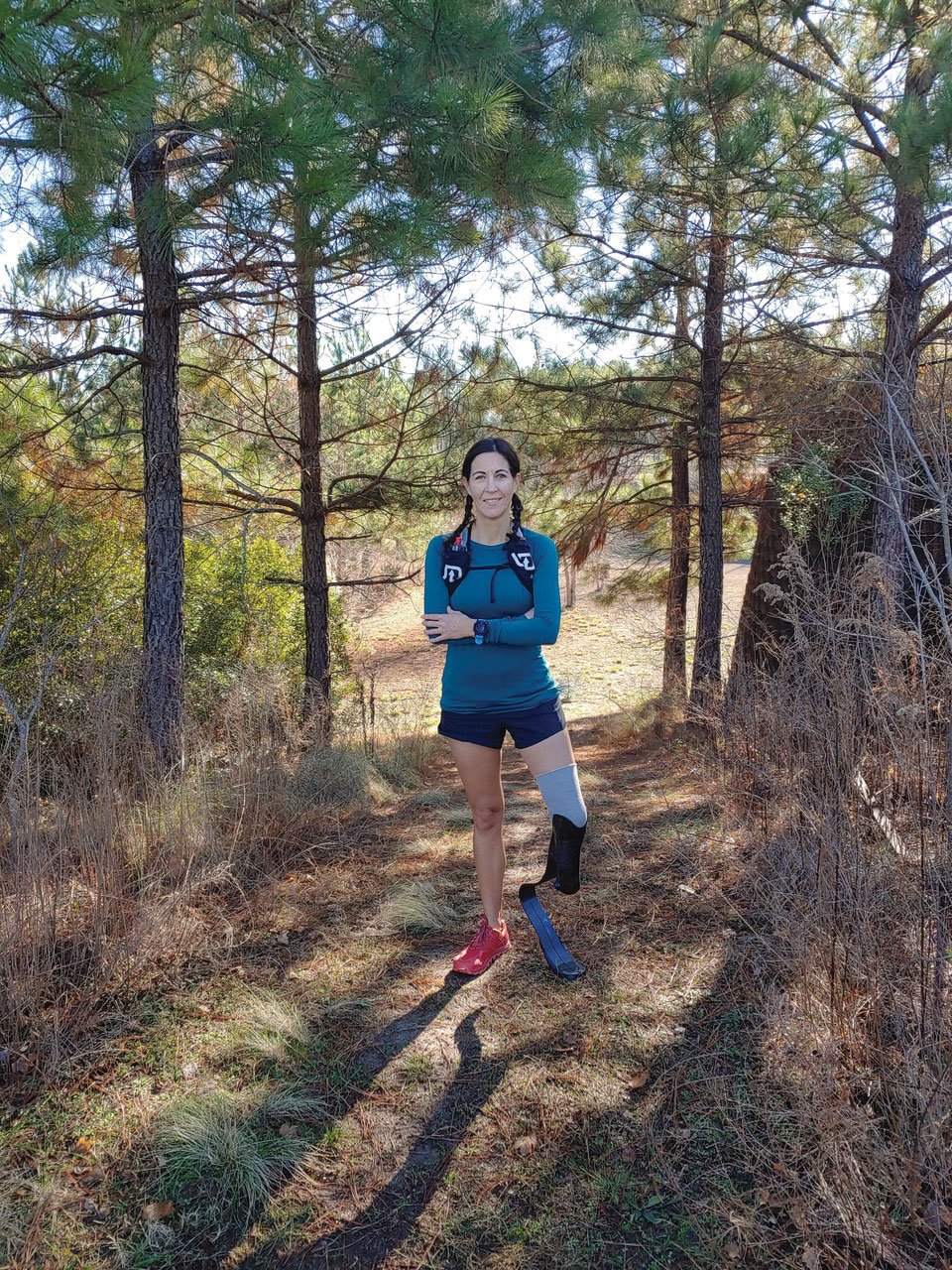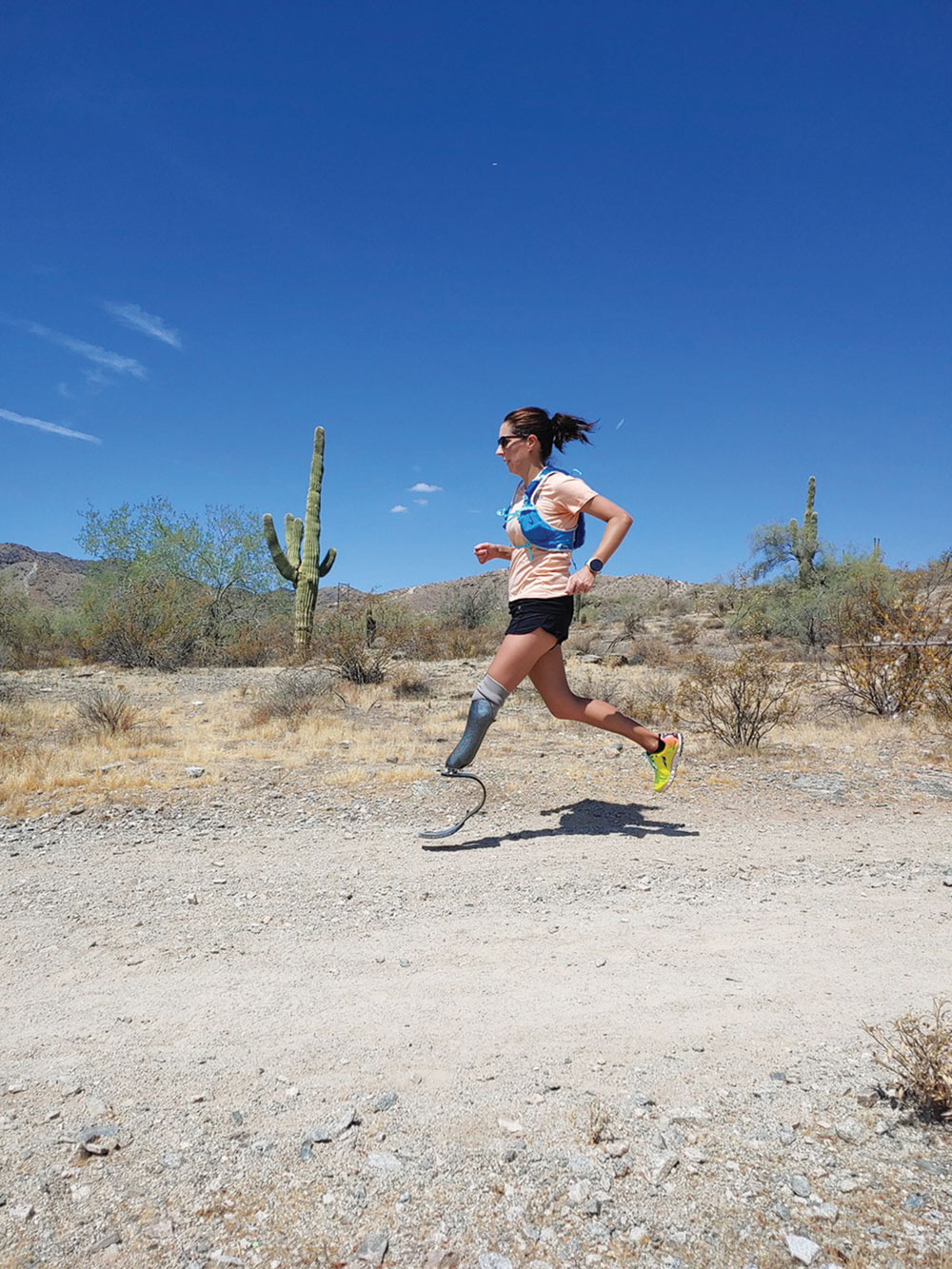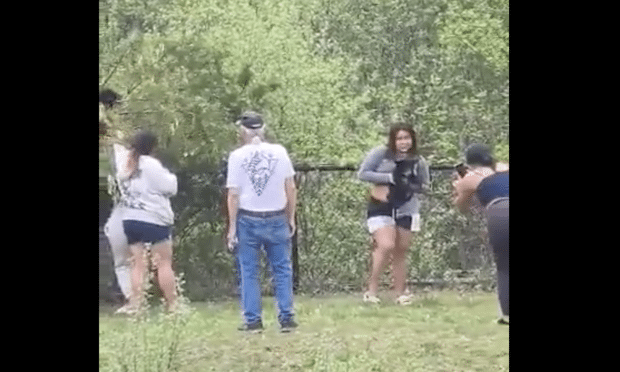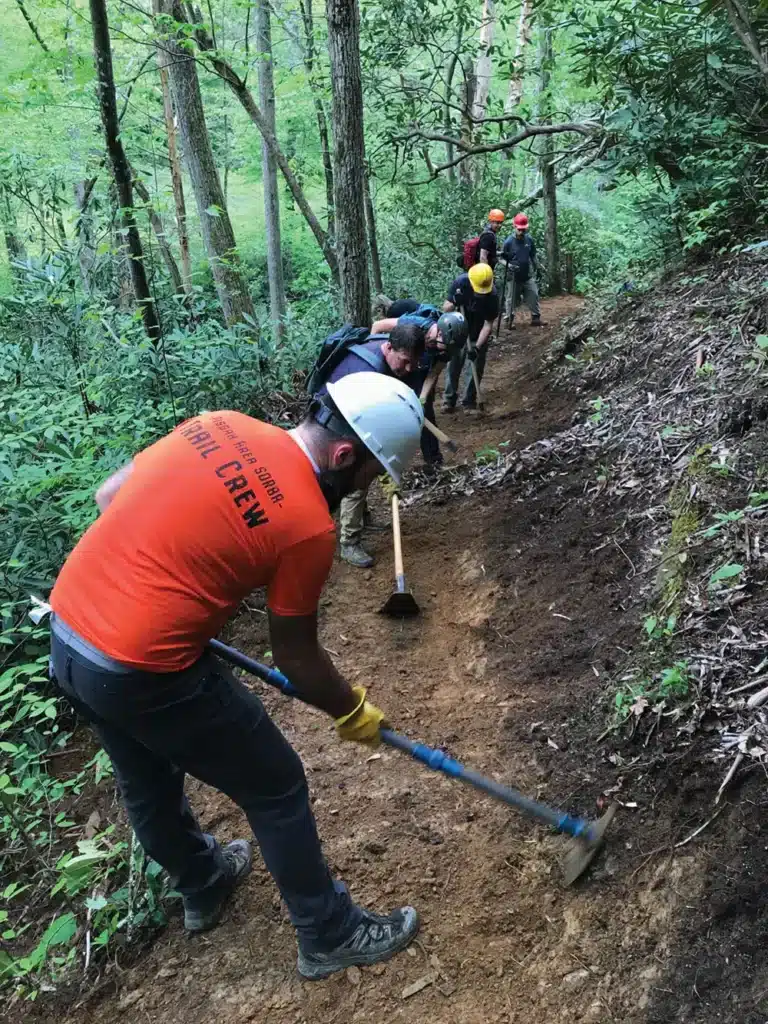Last year Jacky Hunt-Broersma, an amputee ultrarunner from North Carolina, set a 100-mile record.
She remembers that it hurt to the touch. Something had grown back over the site of a surgically removed scar tissue buildup on her leg. At first it was simply tender, then a golf ball-sized growth emerged, seemingly overnight, and the insidious discomfort grew to be unbearable. Jacky Hunt-Broersma scheduled a follow-up visit to see the same doctor who initially told her the pain was merely more scar tissue forming.
“I went in and was like ‘I’m not sure, but I don’t think this is scar tissue any more,’ and he just looked at my leg and went pale,” recalled Hunt-Broersma, 19 years later. “He scheduled me in to see a specialist and scheduled a biopsy.”
Everything moved quickly from there. The biopsy revealed the spot to be Ewing Sarcoma, a rare form of cancer, especially since she was only 25 years old at the time. Within a week of the biopsy, her leg was amputated to prevent the cancer from spreading.
That tumultuous week in 2002 would serve as the launchpad for Hunt-Broersma’s athletic career, one that has seen her complete the six-day, 120-mile TransRockies Run in Colorado and the Naturalist 25K Trail Race in North Carolina. She also recently became the first amputee to run 100 consecutive miles on a treadmill. Her next goal is her biggest yet, the Moab 240 in October. Oh, and she only started running in 2016.
Hunt-Broersma agreed to meet me for a short run in January on what was supposed to be a restful Monday for her, following a combined 40 miles over the two days prior. We met in the Lake Norman State Park visitors center parking lot before setting out on our muddy caper.
Hunt-Broersma grew up in Pretoria, South Africa, and was a competitive swimmer. Despite the endurance and lung capacity she built over years in the pool, she didn’t just avoid running, she despised it.
“I was always the kid who would kind of hide whenever we had any track meets or anything we had to do running-wise,” she said with a chuckle. “I’d be hiding in the bathroom because I hated running so much. I thought running was for crazy people.”
She met her husband, Edwin Broersma, in South Africa. Edwin works in investment banking IT, which led the couple to move to the Netherlands, where the cancer diagnosis and amputation occurred. Jacky works in pharmaceutical marketing, which took the couple from the Netherlands to England, where their two children were born. Five years ago, it was Edwin’s turn again. The couple moved to Cary, N.C., for his job, and that’s where Jacky began running.
“I had been to America quite a few times for work, but my husband had never been,” she explained. “He got the job offer in Raleigh and we were like ‘Where is that?’ It’s been fun. It’s been a great experience and this is where I started my running.”
As I watched her expertly navigate slippery downhills and technical root systems a few paces in front of me, it was hard to believe she has only been at it for five years. She credits Edwin, also a runner, for introducing her to the sport.
“He just seemed like he loved it so much and he always felt good and when he spoke about it, he spoke with passion,” she said. “I was just fascinated, so I wanted to give it a try.”
She signed up for her first 5K in 2016 and competed on a walking prosthetic, much heavier and more rigid than the Fillauer Obsidian running blade she uses now. She walked most of the race, jogging only in spurts, but loved everything about it. The buy-in cost for an amputee runner is steep, with blades often carrying five-figure price tags, but deep down she knew it was a perfect fit.
“It’s not a decision to be taken lightly because my first running blade was $10,000, so it’s one of those things where you’re not like buying a pair of $100 running shoes. It’s $10,000,” Hunt-Broersma said. “I had to be sure I actually want to do this and not just something that you take up and then decide you don’t want to do it anymore. That’s kind of how we went down the route, and then luckily I fell in love with it.”
With her new equipment she signed up for a cross country 5K, then quickly set her sights on a 10K in Durham. When she went to the packet-pickup table the day before the race, a yearning stirred inside of her. She switched to the half-marathon instead, despite never surpassing six miles on a training run. The next day she finished the race in just over two hours, confidence and appetite for mileage both soaring. Trail running provided a new frontier of challenges, and she dove in despite advisements against using her running blade on the often unforgiving terrain of the woods.

“What happens is, especially in the trails we run in Raleigh, they’re all root-y and rocky and there are so many elements where your blade can kind of get stuck under something, so you have to constantly make sure you’re checking,” she explained. “Even anyone that goes on the trail with two legs, you’re constantly checking, making sure you’re not tripping.”
While navigating the switchbacks during her descent from Hope Pass in stage two of the TransRockies, she took a particularly nasty fall. Several other runners rolled her on her back and made her remain supine until she was able to continue. She finished the stage and the race but ultimately switched from a single-plane device to one that is split down the middle into two prongs, which allows more give and adherence to rocks and roots. On her right foot she wears a red Altra Lone Peak shoe. She carries a hydration pack which, along with her fuel, holds duct tape, super glue, and a manual screw for the valve of her blade in the event of any needed mid-run blade maintenance.
When quarantine began back in the spring, Hunt-Broersma, like everyone else, had to adjust her routine to stay active. She had been in training for a 100-mile race that was canceled due to the pandemic, so she put her training to use by registering for the Aravaipa Strong Virtual Race in the 100-mile category. While the record-setting 100-mile treadmill run was more forgiving on her equipment, it surpassed her previous long run by nearly 40 miles and was 10 times longer than her longest treadmill run. With the help of pizza, music, and Netflix, she finished in just under a day with a time of 23:38:45, the eleventh-place female and 36th overall out of nearly 500 participants.
“I knew 100 was going to be challenging, but you just get through it,” she said. “The hardest was at night, two o’clock in the morning. At one point I was falling asleep because the momentum, it was as if you were driving and there’s momentum and you’re starting to doze off.”
As for our run, we capped our mileage well short of 100. The parking lot, and park as a whole, was mostly empty. Her blade and our shoes were caked in mud. It was an overcast morning on her day off and she had logged more miles in the previous 48 hours than most people do in a month, but her effervescence held. Around her neck she wore a gaiter adorned with the state flag of her adopted home of North Carolina, where her second act began.
“Running’s made me really grateful because every time I put on my blade and I’m out on those trails I’m like, ‘Man, this is amazing that I can actually do these things,’” she said, just before we parted ways. “I’m out here. I can actually put in these miles. It has definitely made me look at the world differently and just appreciate it.”
All photos courtesy of Jacky Hunt-Broersma








